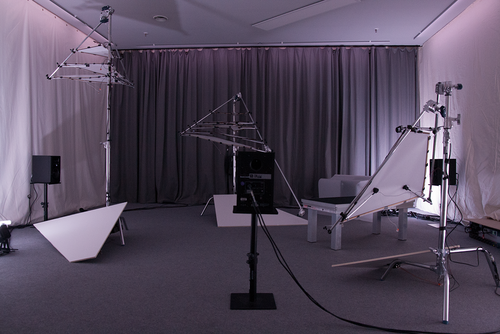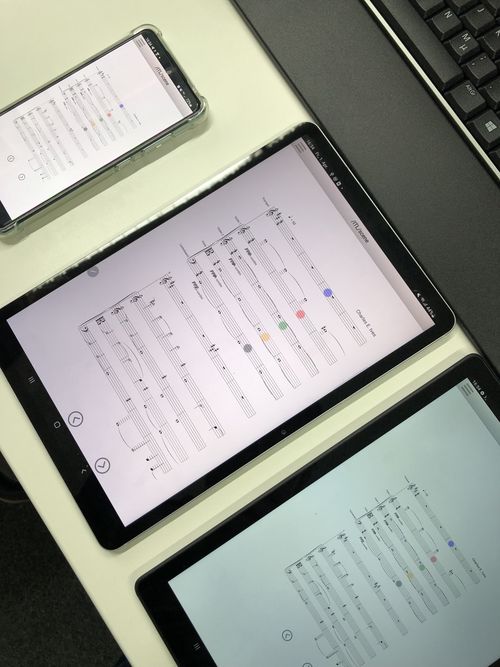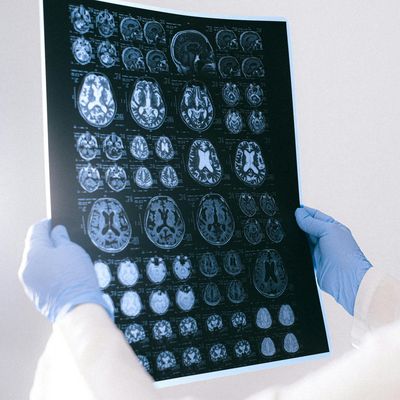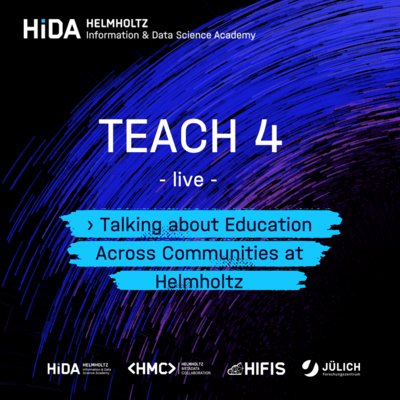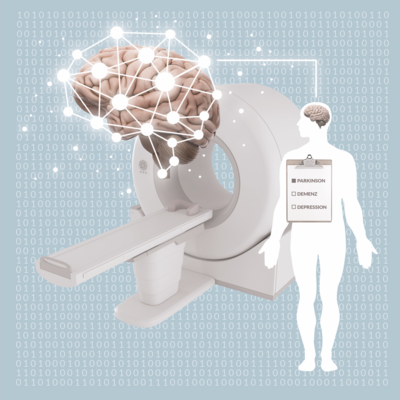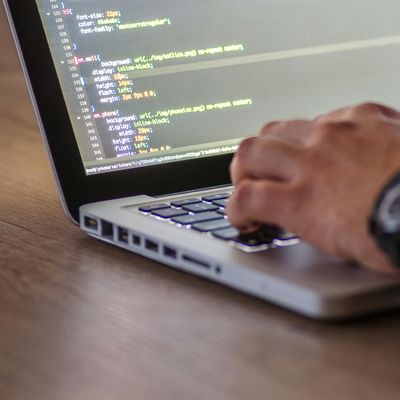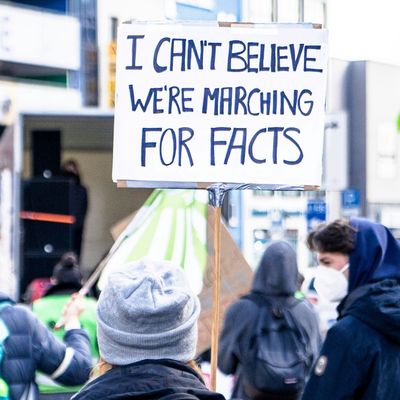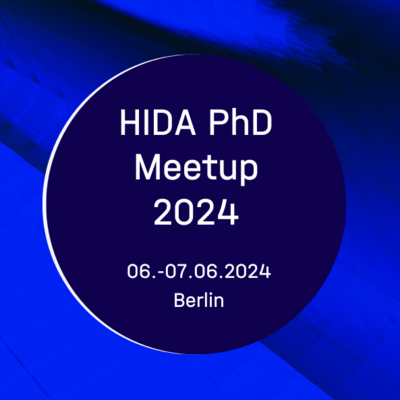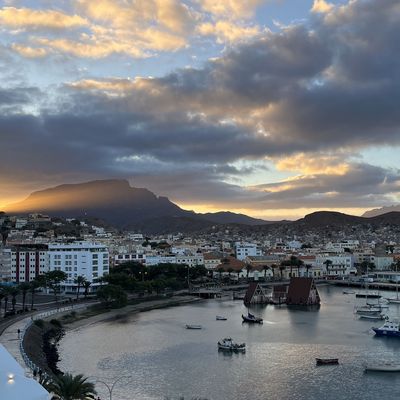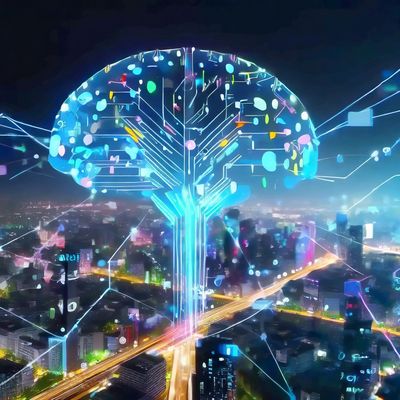When data becomes sound
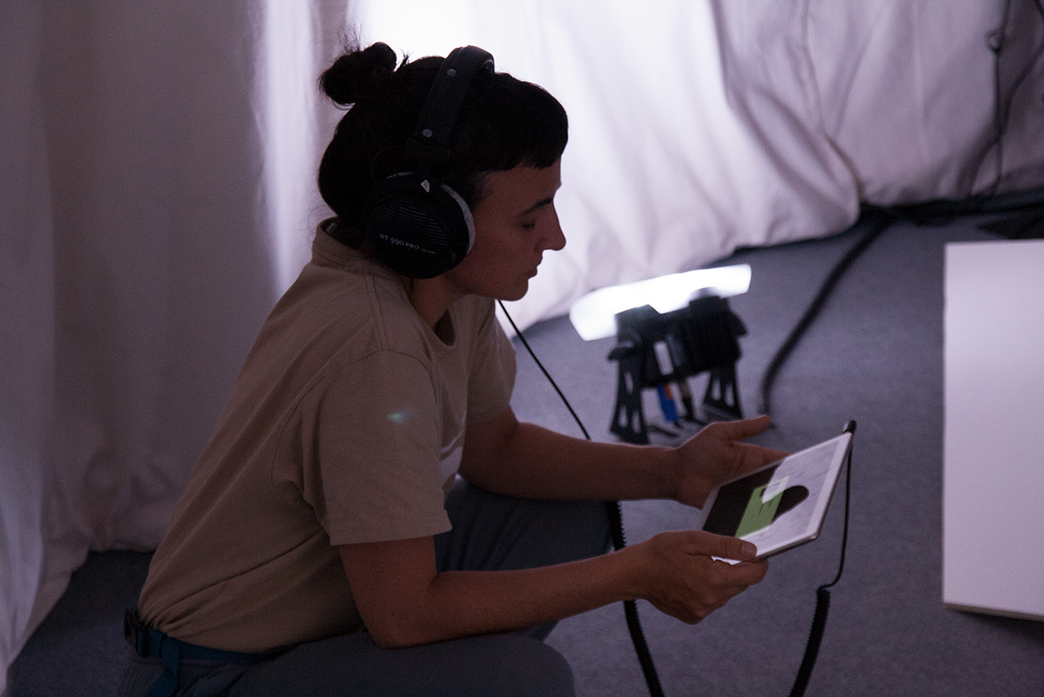
Writing scores with your own heartbeat or turning sunshine into sound? Two projects at the intersection of data science and performative art were selected for the 2021 Art meets Science program of HIDA and the Academy for Theater and Digitality. In October and November, the art projects can now be viewed and heard in Potsdam and Saarbrücken.
How Does the Climate Sound?
The polar regions of the Arctic are the areas of the earth that are rapidly warming. Although the issue of climate change has reached the public and is becoming apparent through increased frequency of extreme weather events, it is still difficult to communicate these facts. Climate change is occurring on a spatial and temporal scale much larger and slower than our human perception. Thus, for many, it remains only a distant, diffuse threat. The COMMON GROUNDS project seeks to respond to this by inviting us to approach climate in an acoustic way.
HIDA Fellows Kerstin Ergenzinger and Bnaya Halperin-Kaddari of the Sono-Choreographic Collective designed an artificial sound environment based on an extensive dataset of hourly weather measurements. This weather data was recorded over a 20-year period in the Arctic on Spitsbergen. Various sonification methods transform the endless columns of numbers from measured values of soil moisture, precipitation or sunshine into sounds so that they can be experienced sensually. Condensed into a one-hour sound loop, two decades of weather information become an impressive, polyphonic "chorus." Part of the installation is an audio guide and map that helps visitors navigate through the various stations and sounds.
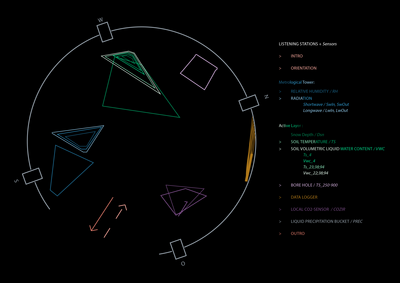
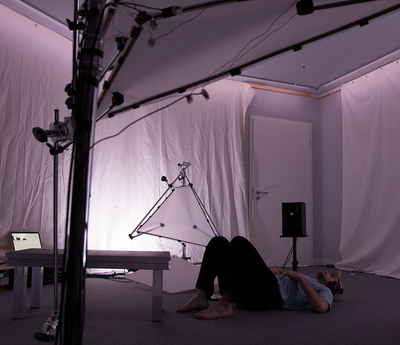
Interdisciplinary Program Art Meets Science
Art Meets Science
Thanks to the innovative exchange with the Academy for Theater and Digitality Dortmund, HIDA enables the exploration of Data Science and Artificial Intelligence in the performative arts and thus represents a unique opportunity for artists, but also for programmers or scientists, to creatively address questions and application contexts of data sciences across borders.
Find out more about the program here!
Art Meets Science
The COMMON GROUNDS sound and light installation creates a common ground that invites visitors to listen and linger. The translation of weather and climate data of the Arctic into sounds enables the listener to access these phenomena as a physical and sensory, musical experience and opens a new perspective on climate.
The work was developed by Kerstin Ergenzinger and Bnaya Halperin-Kaddari and the Permafrost Research Group led by Prof. Dr. Julia Boike at the Alfred Wegener Institute Potsdam in collaboration with Tobias Grewenig.
Extensive documentation on the project and its underlying research by the Permafrost Research Group can be found here.
Your Heartbeat Plays Along
The percussionist and composer Martin Hennecke, also a first-year HIDA fellow at the Academy for Theater and Digitality, devised a special application situation for Data Science in order to make the uniqueness of each live performance tangible in a special way. In his project "The (Un)Answered Question - A Musical Data Science Experimentation" he combined selected methods and techniques of data science with conceptual and compositional ideas from theatre and music.
Based on Ralph Waldo Emerson's poem "The Sphynx" and the piece "The Unanswered Question" by American composer Charles Ives, Hennecke developed and explored a prototype for such a performance. Both works are mixed together and modified during the performance, depending on the state of mind and the physical condition the performing artists or the spectators are in. The decisive factor for the respective result is various body data of the audience and the performers, for example the heartbeat or the facial expression, which are recorded by means of fitness trackers or emotion recognition via image recognition software. An intelligent algorithm collects these various biodata and processes them into video projections and a live orchestral remix of the original composition. This remix becomes a new score streamed in individual parts to tablets for the musicians. – The result is an immersive and exclusive live experience in which listeners and performers alike participate.
Also involved in the project were the Berlin Ultrahigh Field Facility at the Max Delbrück Center for Molecular Medicine and the Institute of Software Technology at the German Aerospace Center.
You can read more about the concept and implementation of the project in this wiki.
Dates
- Common Grounds: can be seen and heard daily from 10am-4pm, Monday to Friday, from October 12 to November 30, 2022, on the upper floor of the Alfred Wegener Institute Potsdam. As the room is only freely accessible to AWI staff, please pre-register with Julia Boike: Julia.Boike@awi.de.
- The (Un)Answered Question – A Data Science Powered Music Experiment: The first full public performance with orchestra will be on November 8th with Saarländisches Staatsorchester at Alte Feuerwache Saarbrücken.
The Artists
Kerstin Ergenzinger is an acoustic and visual artist working in sculpture, sound, kinetics, light and drawing. The inextricable relationships between body and world, between perception and the perceived, between sensing and the making of meaning are central themes of her practice. In recent years, she has focused primarily on different sound ecologies and the various ways in which we can tune into differences in the world. Ergenzinger studied fine arts at the Berlin University of the Arts and sculpture at Chelsea College of Art and Design London, and completed graduate studies in media arts at the Academy of Media Arts Cologne.
Bnaya Halperin-Kaddari explores a plethora of artistic strategies ranging from instrumental, electroacoustic or improvised music, instrument making and sound installation to video and somatic work. Trained as a wind musician, he studied composition, musicology, and literature at the Hebrew University in Jerusalem and earned his master's degree in composition at the Hochschule für Musik, Theater und Medien in Hannover, Germany. From 2016-2018 he was a fellow at the Berlin Center of Advanced Studies at the Berlin University of the Arts and is currently a PhD student at Goldsmiths College London.
In 2019, together with Kerstin Ergenzinger and Kiran Kumar, he founded a collective for transdisciplinary art and research, the Sono-Choreographic Collective.
Martin Hennecke is a percussionist, composer and since 2009 deputy principal timpanist of the Saarland State Orchestra Saarbrücken. His compositional work focuses on percussion and electronics, but also orchestral music and the performative embedding of visual elements within the concert. His works have been premiered at the EVIMUS-Festival for electroacoustic and visual music, in productions of the Saarland State Ballet, at the Philharmonie Luxembourg or the festival Zappanale, broadcast by various radio stations of the ARD and included in the Contemporary Music Score Collection of the UCLA Music Library. Since 2020 Martin Hennecke teaches at the Hochschule für Musik Saar.

